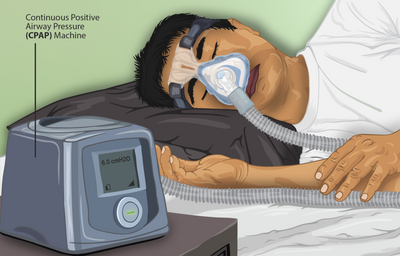By Lisa Dogget, Public Health Watch
Becky Bernhardt didn’t know why she coughed when she cooked. Something in her kitchen seemed to trigger her asthma. “My daughter, 13, who also has asthma, had the same thing,” she said. “We had no idea what was causing it.”
Bernhardt, a lawyer who serves as executive director of Texas Physicians for Social Responsibility, didn’t think her stove could be the problem. But when she learned about the potential harms of cooking with gas, she made a switch.
She’s noticed a difference. “I used to cough up a storm when I cooked before I got an induction stove,” Bernhardt said, referring to a type of cooktop that heats pans using an electromagnetic field. Her cough has disappeared.
Gas stoves are a health hazard flying under the radar. Thirty-five to 40% of U.S. households, including mine, rely on gas for cooking. Many of us think having a gas stove is a net positive. We’ve been told that heat can be more easily adjusted on a gas range and that real chefs prefer gas.
The gas industry has spent decades feeding us this narrative. It plays down safety concerns. But as the risk becomes clearer, gas stoves may start to fall out of favor. That’s probably a good thing.
What’s the Problem With Gas?
Natural gas, which consists primarily of methane, is not the “clean” energy source the fossil-fuel industry would have us believe. When burned, natural gas releases dangerous pollutants, including nitrogen oxides, carbon monoxide and particulate matter, often exceeding federal ambient air standards. Nitrogen dioxide can worsen asthma, increase susceptibility to respiratory infections and worsen cognition. Particulate matter is a threat to people with underlying heart and lung conditions and may increase the risk of stroke. Carbon monoxide can cause neurological disturbances including fatigue, dizziness and confusion.
Not everyone responds the same way to gas-stove emissions. “An individual’s risk profile depends on a lot of factors including their personal history and what mitigations they are using,” said Brittany Meyer, national director of healthy indoor air at the American Lung Association. The association, she said, is conducting a review of the scientific literature to develop policy recommendations on gas stoves.
While we still have much to learn, research indicates that people with pre-existing lung conditions, like Bernhardt, are at risk of poor health outcomes from cooking with gas. As with many environmental health issues, Blacks, Latinos and those with low incomes bear an unequal burden from gas-stove pollution, largely due to their higher rates of asthma and greater exposure to outdoor air pollution compared to non-Hispanic whites or those with higher incomes. People who live in apartments or smaller homes, especially if ventilation is poor, also are at higher risk.
With their still-developing respiratory and immune systems, children are more vulnerable to poor air quality, both in and out of the house, than healthy adults. Their respiratory rate is usually faster, they are often more physically active, and they have a higher lung-to-body ratio than adults. A meta-analysis showed that children living in homes with gas stoves have a 32% higher risk of both current and lifetime asthma.
Gas and Climate Change
Gas stoves also contribute to climate change. Methane, though short-lived, is a greenhouse gas 86 times more potent than carbon dioxide on a 20-year timescale. An estimated 13% of the total U.S. greenhouse gas emissions in 2020, largely from gas used for cooking and heating, came from commercial and residential buildings.
Gas leaks are another concern. A new study by Stanford scientists estimates that the climate impact due to methane leaks, specifically from gas stoves, is equal to that of about 500,000 gasoline-powered cars. “Fugitive leaks” from the thousands of miles of U.S. gas pipelines and at extraction sites also contribute to global warming.
“Atmospheric methane levels (like all other greenhouse gas levels) are at an all-time high and are only going up,” said Zach Williams, a health educator and campaign coordinator at Physicians for Social Responsibility’s national office. “The continued use of fossil fuels like methane gas not only degrades our lungs but also destroys the climate.”
It gets worse. A study last month in Environmental Science & Technology shows that natural gas used in homes contains the carcinogen benzene, among other volatile organic compounds.
Local and state governments are starting to act. Dozens of municipalities, including New York City, have banned natural-gas appliances in new buildings. Washington recently became the first state to require all-electric space- and water-heating systems in most new commercial and large multi-family buildings, starting next summer. President Biden’s stalled climate plan calls for government incentives to shift from residential gas to all-electric.
Williams sees reason for optimism. “We hope more and more cities and states will pass environmental-justice and building-electrification policies to prevent new gas connections in new construction and help low-income folks with home rehabilitation programs for older homes with existing gas connections,” he said.
Mitigation Strategies
If you have serious asthma or other respiratory problems, you may want to ditch your gas stove for a safer option, such as an electric or induction range.
But for the rest of us — or if making a change is cost-prohibitive or not allowed by your landlord — there are ways to lower your risk.
- Improve ventilation by opening windows when cooking, using an exhaust hood and cooking on the back burners.
- Install a carbon-monoxide detector.
- Use electric appliances, such as a toaster-oven or an electric tea kettle. Plug-in induction burners can be purchased for as little as $60 apiece — much less than replacing a stove.
I’m not ready to get rid of my gas stove yet and don’t like the idea of sending a perfectly functional appliance to a landfill. But I’m taking some of the steps listed above to reduce the risk to my family.
A study released last month by the journal Lancet Planetary Health suggests that 1 in 6 deaths globally can be attributed to pollution. Clearly, we have work to do. We can start at home by scrapping, or mitigating the unhealthy effects of, our gas stoves.
Lisa Doggett, senior medical director of HGS AxisPoint Health, is a columnist for Public Health Watch. The views expressed in her column do not necessarily reflect the official policy or position of HGS AxisPoint Health or Public Health Watch.
This article was originally published by Public Health Watch, a nonprofit investigative news organization. Find out more at publichealthwatch.org




